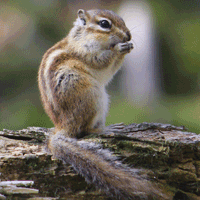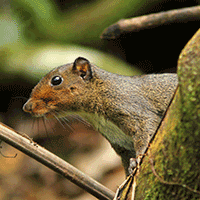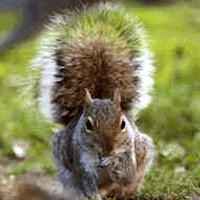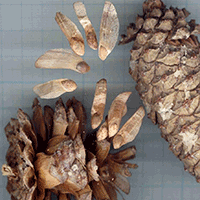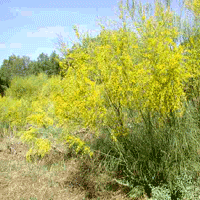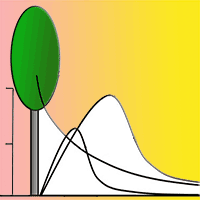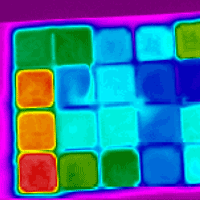
Evidence of Alectoris chukar (Aves, Galliformes) as seed dispersal and germinating agent for Pistacia khinjuk in Balochistan, Pakistan
Muhammad Essa (1-2) , Ziauddin Ziauddin (1), Muhammad Ali Khan (1), Muhammad Imran (2), Ahmed Essote Saeed (3)
iForest - Biogeosciences and Forestry, Volume 14, Issue 4, Pages 378-382 (2021)
doi: https://doi.org/10.3832/ifor3691-014
Published: Aug 22, 2021 - Copyright © 2021 SISEF
Short Communications
Abstract
Seed dispersal is a key process for the distribution of wild fruit plants in forests and/or rangeland. The ecological role of Alectoris chukar as a seed dispersal agent was hardly known to date, though its diet consists of herbs, shrubs, and fleshy fruits of wild plants. Here we report the first evidence of seed dispersal and germination of wild pistachio plant (Pistacia khinjuk Stocks) favored by Alectoris chukar from the district Killa Saifullah and Pishin in Balochistan, Pakistan. Fecal droppings of Alectoris chukar were collected by a suitable sampling method from August to September 2020. Fecal droppings were kept in plastic bags, and later washed thoroughly, identified, and counted for Pistacia khinjuk seeds, which have a characteristic rounded and tough seed coat easily distinguishable from other seeds. Out of a total of 840 fecal samples collected, 557 were identified as Pistacia khinjuk seeds. A comparative germination trial was carried out for pistachio seeds both from Alectoris chukar fecal droppings and manually collected from mother trees in the forest. After passing through the chukar gut, the seeds were still viable and showed a faster germination rate as compared with seeds collected from mother trees and directly sown in the soil. The results revealed that Alectoris chukar is an important spreading and germinating agent for seeds of pistachio plants in suitable habitats and could contribute in the long term to modify the ground vegetation of (sub)arid regions depending on its dietary preferences.
Keywords
Alectoris chukar, Balochistan, Fecal Dropping, Pistacia khinjuk, Seed Dispersal, Seed Germination
Authors’ Info
Authors’ address
Ziauddin Ziauddin 0000-0001-6380-0580
Muhammad Ali Khan 0000-0001-6756-4298
Center for Advanced Studies in Vaccinology and Biotechnology (CASVAB) University of Balochistan, Quetta (Pakistan)
Muhammad Imran 0000-0002-7800-7267
Forest & Wildlife Department, Government of Balochistan, Quetta (Pakistan)
Zoology Department, University of Balochistan, Quetta (Pakistan)
Corresponding author
Paper Info
Citation
Essa M, Ziauddin Z, Khan MA, Imran M, Saeed AE (2021). Evidence of Alectoris chukar (Aves, Galliformes) as seed dispersal and germinating agent for Pistacia khinjuk in Balochistan, Pakistan. iForest 14: 378-382. - doi: 10.3832/ifor3691-014
Academic Editor
Mirko Di Febbraro
Paper history
Received: Nov 06, 2020
Accepted: Jun 24, 2021
First online: Aug 22, 2021
Publication Date: Aug 31, 2021
Publication Time: 1.97 months
Copyright Information
© SISEF - The Italian Society of Silviculture and Forest Ecology 2021
Open Access
This article is distributed under the terms of the Creative Commons Attribution-Non Commercial 4.0 International (https://creativecommons.org/licenses/by-nc/4.0/), which permits unrestricted use, distribution, and reproduction in any medium, provided you give appropriate credit to the original author(s) and the source, provide a link to the Creative Commons license, and indicate if changes were made.
Web Metrics
Breakdown by View Type
Article Usage
Total Article Views: 33577
(from publication date up to now)
Breakdown by View Type
HTML Page Views: 28173
Abstract Page Views: 2708
PDF Downloads: 2112
Citation/Reference Downloads: 1
XML Downloads: 583
Web Metrics
Days since publication: 1595
Overall contacts: 33577
Avg. contacts per week: 147.36
Citation Metrics
Article Citations
Article citations are based on data periodically collected from the Clarivate Web of Science web site
(last update: Mar 2025)
(No citations were found up to date. Please come back later)
Publication Metrics
by Dimensions ©
Articles citing this article
List of the papers citing this article based on CrossRef Cited-by.
References
A meta-analysis of the effect of gut treatment on seed germination. In: Proceedings of the 3rd International Symposium-Workshop on Frugivores and Seed Dispersal “Seed Dispersal and Frugivory. Ecology, Evolution, and Conservation” (Levey DJ, Silva WR, Galetti M eds). São Pedro (Brazil) 6-11 Aug 2000. CAB International, Wallingford, UK, pp. 339-350.
CrossRef | Gscholar
Seed dispersal: theory and its application in a changing world. CABI Publishing, Wallingford, UK, pp. 78-103.
Gscholar

